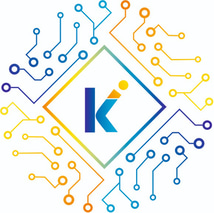Power management components are a crucial part of modern electronic systems, enabling the efficient and reliable supply of power to various components and subsystems. These components are designed to manage the flow of power, minimizing energy loss and heat generation, while also ensuring the stability and reliability of the overall system.
At the heart of any power management system is the power converter, which is responsible for converting the input power into the required output power. Power converters can take many forms, including linear regulators, switching regulators, and DC-DC converters. Linear regulators, for example, use a series pass element to regulate the output voltage, while switching regulators use a switching element to convert the input power into a high-frequency AC signal, which is then filtered to produce the output DC voltage.
In addition to power converters, power management systems also rely on a range of other components, including power switches, rectifiers, and filters. Power switches, for example, are used to control the flow of power, while rectifiers are used to convert AC power into DC power. Filters, on the other hand, are used to remove unwanted frequencies and noise from the power supply.
One of the key challenges in designing power management components is managing the trade-off between efficiency and cost. High-efficiency power converters, for example, often require more complex and expensive designs, while lower-cost designs may sacrifice efficiency for the sake of simplicity. To address this challenge, designers use a range of techniques, including the use of advanced materials and manufacturing techniques, as well as sophisticated design and simulation tools.
Another important consideration in designing power management components is thermal management. Power converters and other power management components can generate significant amounts of heat, which can reduce their reliability and lifespan. To mitigate this effect, designers use a range of thermal management techniques, including the use of heat sinks, thermal interfaces, and cooling systems.
In recent years, there has been a growing trend towards the use of advanced power management technologies, including digital power management and power factor correction. Digital power management, for example, uses digital control techniques to optimize the performance of power converters, while power factor correction uses advanced control algorithms to optimize the power factor of the power supply.
The development of power management components also relies heavily on the use of advanced simulation and modeling tools. These tools enable designers to simulate the behavior of power converters and other power management components, allowing them to optimize their designs and predict their performance. For example, a designer might use a simulation tool to model the behavior of a power converter, allowing them to optimize its design for specific efficiency and cost targets.
In addition to simulation and modeling tools, designers of power management components also rely on a range of measurement and testing tools. These tools enable designers to measure the performance of power converters and other power management components, allowing them to verify their designs and make any necessary adjustments. For example, a designer might use a power analyzer to measure the efficiency and power factor of a power supply, allowing them to optimize its design for specific performance targets.
In conclusion, power management components are a critical part of modern electronic systems, enabling the efficient and reliable supply of power to various components and subsystems. The design of these components requires a deep understanding of power converter design, thermal management, and advanced power management technologies. By leveraging advanced simulation and modeling tools, as well as measurement and testing tools, designers can create power management components that are optimized for specific performance targets and that provide high levels of efficiency, reliability, and cost-effectiveness.
